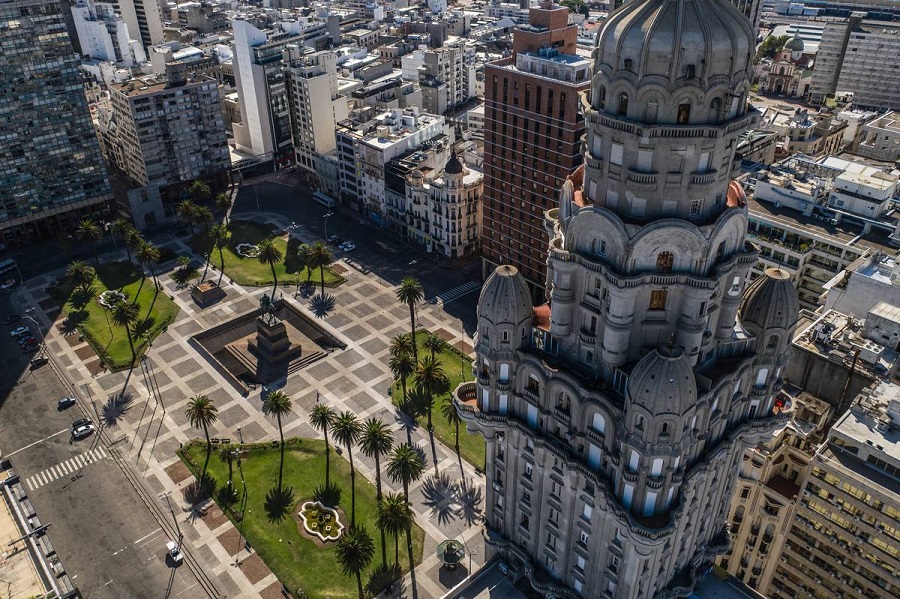RIO DE JANEIRO, BRAZIL – The projected GDP “V-shaped” recovery, forecast at the start of the health emergency, only seems to have occurred in Paraguay and Brazil. In the two River Plate economies – Argentina and Uruguay – the outlook is less encouraging, to the extent that it may be necessary to wait until 2023 to overcome the deep downturn in economic activity that occurred in 2020.
The pandemic has left deep scars at the global level, and among MERCOSUR countries in particular, with significant activity level declines in 2020 and with consequences for employment, poverty incidence, widening fiscal deficits and increased public indebtedness, among other economic and social areas that were impacted by the outbreak of Covid-19.

During the second quarter of 2020 – the first quarter of the pandemic – all MERCOSUR economies posted significant declines in GDP. The most severe deterioration was observed in Argentina, where there was a 20% seasonally adjusted drop, and the mildest was in Paraguay (-7.5%), while in Brazil and Uruguay the downturn was close to -11%.
From then on, the trajectories of activity levels began to diverge. By late 2020, Paraguay had more than recovered its 2019 GDP level, and Brazil was close to reaching it. However, Argentina and Uruguay’s economies remained below their pre-crisis activity levels. If GDP data are normalized, taking as a reference the average 2019 level, at the end of 2020 Argentina stood 5.4% below the previous year, while in the case of Uruguay the gap reached 4.0%.
When the National Accounts data for the first quarter of 2021 were released, it was found that Paraguay and Brazil had surpassed the 2019 overall economic activity level and it was confirmed that Argentina and Uruguay recorded a slower recovery.
In fact, in the economic recovery trajectory analysis observed among MERCOSUR countries, in the first quarter of 2021, the Uruguayan economy was the farthest away from reaching 2019 activity levels.
How to compare the different activity level recovery trajectories?
The performance observed in each country can be better interpreted by taking into account the main components of GDP.
The analysis of the impact of each aggregate demand component in accounting for GDP growth (or decline, strictly speaking) last year provides relevant information to understand the most relevant aspects of the different reactivation processes observed in the trade bloc’s economies.
Argentina posted a GDP slump of almost 12%, explained by an almost 10% decline in domestic consumption, and the drop in the overall economic activity level is exacerbated as a consequence of the decline in investment. In the case of the Argentine economy, public (government) consumption has a negative, albeit limited, impact on the evolution of GDP, and the net effect of the foreign sector’s contribution is not significant either. Although there was a significant drop in exports last year, this was virtually offset by a “positive” impact caused by the drop in imports.
Following Argentina, Uruguay is the country with the highest negative impact of private consumption. In this first year of pandemic, Uruguay was the MERCOSUR country where public consumption had the greatest negative impact. At the other end, Paraguay is the only country with a positive incidence of public consumption in 2020.
The Uruguayan economy is the only one where investment has a positive impact. This is largely related to the direct and indirect impact of the construction of the new UPM plant, which contributed slightly more than 1% of GDP in 2020. Excluding this effect, the drop in GDP last year would have reached around 7%.
The negative contribution of private consumption to GDP variation in 2020 observed across the 4 MERCOSUR countries is a reflection of the significant contraction in household income, resulting from different combinations of the behavior of employment levels and the real remuneration of workers and liabilities in the region’s various countries.
Unlike Argentina, the net effect of foreign trade is negative in Paraguay and Uruguay. Both exports and imports decreased, but the latter did not have a significant impact. It should be noted that in the case of Brazil, where the net effect is positive, the downward impact on exports was more than offset by the decrease in imports.
Considering the growth projections for the coming years, when would Argentina and Uruguay be able to reach pre-pandemic levels? The most recent projections of GDP trajectories for the next few years show that the two economies will have to wait until 2023 for annual GDP to rise above 2019 levels.

